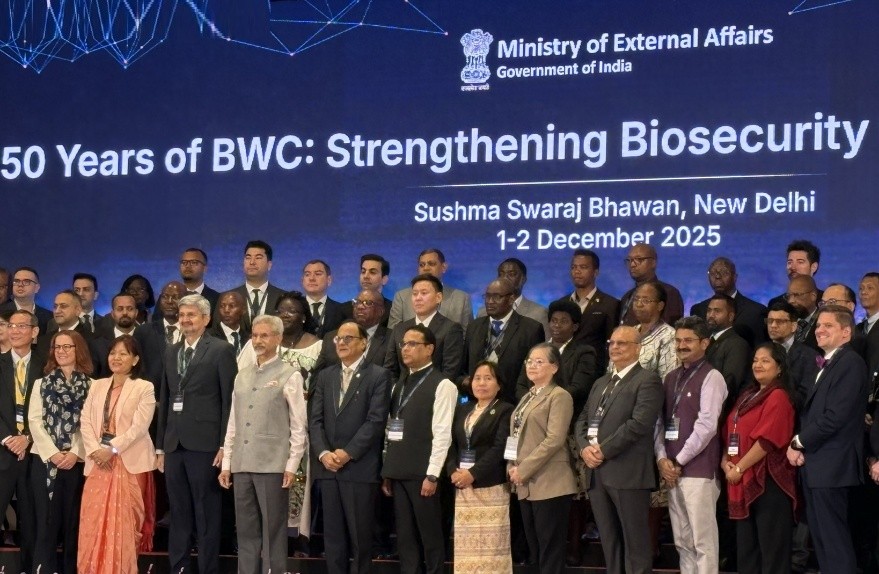Font size:
Print
Supreme Court Expands Remission Rights for Prisoners
Context:
In a significant ruling on prisoners’ rights, the Supreme Court has directed state governments to consider the premature release of eligible convicts under remission policies, even if they have not applied for it.
More on News
- This decision, with certain exceptions for specific categories of convicts, empowers states to release prisoners before they complete their sentences under the Bharatiya Nyaya Suraksha Sanhita, 2023 (BNSS) and the Code of Criminal Procedure, 1973 (CrPC).
- This case was initiated suo motu by the Supreme Court in 2021 to address issues of prison overcrowding.
Shift in the Supreme Court’s Approach to Remission
- The decision represents a notable shift from the court’s earlier stance.
- In two rulings from 2013—Sangeet and Anr. v State of Haryana and Mohinder Singh v State of Punjab—the Supreme Court had held that remission could not be granted suo motu by the state and required an application from the prisoner.
- However, the latest ruling acknowledges that most states already have remission policies with clear eligibility criteria, making a formal application unnecessary.
Understanding the Law on Remission
- Remission refers to the reduction of a convict’s sentence period.
- Section 473 of the BNSS (previously Section 432 of the CrPC) grants state governments the power to remit sentences “at any time.”
- This power allows states to impose conditions on convicts, such as mandatory check-ins with police officers.
- If a convict fails to comply with these conditions, the remission can be revoked, leading to their re-arrest.
- However, Section 475 of the BNSS (formerly Section 433A of the CrPC) restricts this power in cases where convicts are serving life sentences for crimes punishable by death.
- In such cases, the convict must serve at least 14 years before being eligible for remission.
- The BNSS and CrPC state that remission proceedings begin “whenever an application is made to the appropriate government.”
- However, the Supreme Court has now ruled that an application is no longer a strict prerequisite if a remission policy is already in place.
Key Takeaways from the Supreme Court’s Ruling
- The court analysed its previous judgments in Sangeet and Mohinder Singh and found that they did not consider scenarios where states had pre-existing remission policies.
- It noted that prison manuals in several states require prison superintendents to initiate remission proceedings.
- Therefore, it would be discriminatory and arbitrary for states not to suo motu consider eligible prisoners for remission, violating Article 14 of the Indian Constitution, which guarantees the right to equality.
- The court also addressed concerns raised in Sangeet, where it was stated that an application requirement prevents en masse or discretionary releases, particularly on festive occasions.
- The latest ruling, however, emphasises that when a remission policy with defined eligibility conditions exists, the state has an obligation to review all eligible cases.
Further Directives from the Supreme Court
- To ensure uniform application across the country, the Supreme Court directed all states to establish comprehensive remission policies within two months if they do not already have one.
- Additionally, the court built upon its 2024 ruling in Mafabhai Motibhai Sagar v. State of Gujarat, which held that conditions for remission must be reasonable. The key principles outlined by the court include:
- Considering factors like the motive behind the crime, the convict’s criminal background, and public safety.
- Ensuring that remission conditions promote rehabilitation and prevent recidivism.
- Avoiding excessively strict conditions that make remission impractical.
- Making conditions clear, specific, and achievable.
- The Mafabhai ruling also clarified that remission should not be automatically revoked for minor infractions.
- Instead, the circumstances of each case must be evaluated, and a convict should be given an opportunity to respond before their remission is canceled.
Impact on India’s Prison System
- As per the National Crime Records Bureau’s latest data, Indian prisons had an occupancy rate of 131.4% as of December 31, 2022, housing 5,73,220 inmates against a total capacity of 4,36,266.
- While the Supreme Court’s decision may help ease this overcrowding, the majority of prisoners (75.8%) are undertrials, meaning they are yet to receive a final verdict.
- Though there is no official data on how many prisoners have benefitted from remission policies over time, the Prison Statistics in India Report (2022) provides some insight.
- In 2020, 2,321 prisoners were released prematurely, increasing slightly to 2,350 in 2021. However, the number of premature releases surged to 5,035 in 2022.
The Supreme Court’s decision marks a crucial step toward prison reform, reinforcing the need for structured remission policies that are fair, transparent, and accessible to all eligible convicts.


